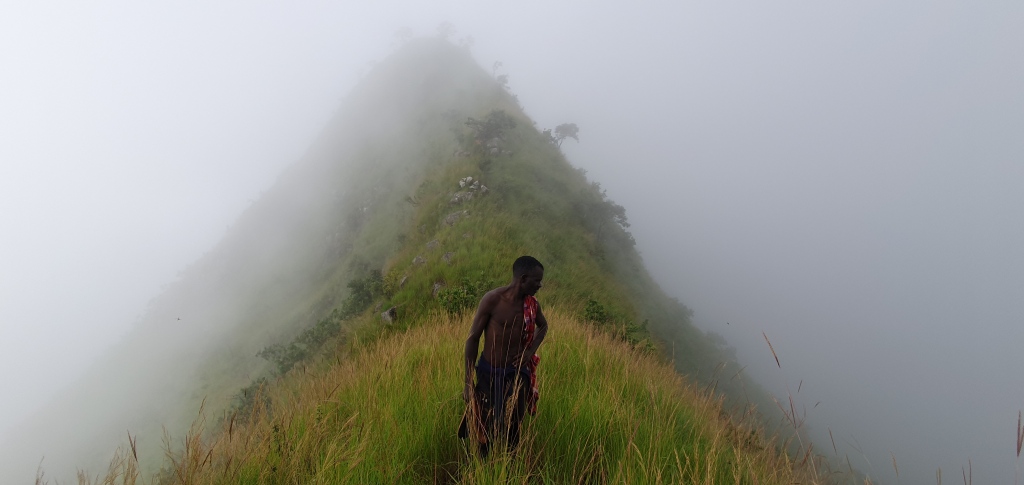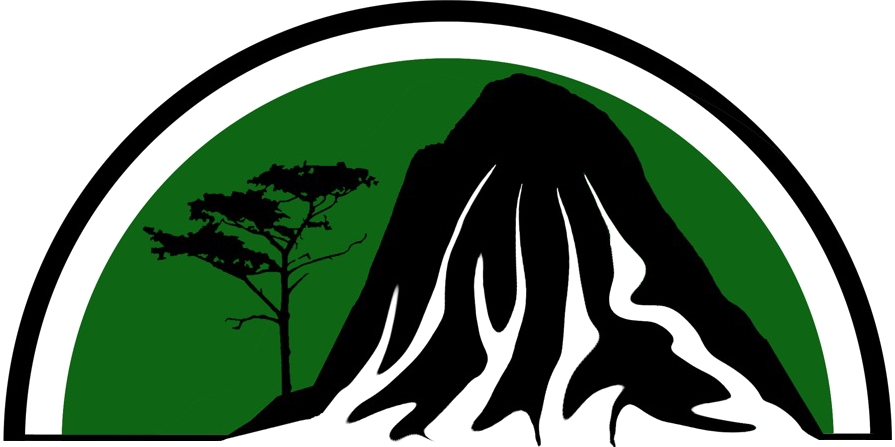Arie Glas

Having done all but one of the usual ascents onto the plateau with the family, I had set my mind on also completing the Crater Path, as described in Corbyn’s guide.
Crisp early morning light in early April. Mulanje is partly hidden behind clouds as a bicycle driver drops me off at Chitakale, where I meet longtime guide and friend Moses. He has organized two more gentlemen to join us, both devoted Rastafari, one of them Chair of Nakulo tour guiding association close to Mulanje Boma.
We quickly set off in the tea below the crater, passing gum plantations and a huge rock which serves as campsite for Rastafaris too, I learn. Plenty of water in beautiful Muloza river and soon we find ourselves hopping from rock to rock, crossing the stream several times.
After about an hour, perhaps a third into the crater, we start to climb steeply up on the left side. This hill is called the ‘’windstopper’’ in Chichewa, as it protects the Cratermouth on this side. Earlier descriptions have this part of the route going through thick forest, but all miombo and evergreen forest is now gone from the Crater. What remains are scrub and fallen logs, waiting for the sawyers in their camps here and there. A sad sight towards the back of the valley, where the forest was very recently cut and many black trunks are scattered like burnt matches. Yet, at the same time a beautiful waterfall can be seen and the crater walls remain spectacular.
We now get lost on the hillside in the mist. The path is hardly visible and only referencing on a gps map helps us find the way again. It’s incredibly steep here and two of us slide down, belly first, a few meters. Then we’re at last able to see a first saddle that marks the beginning of a long ridge to follow up.
This ridge is incredible. Just two meters wide, going steep down on both sides. Fog whirls around us, offering glimpses into the depths below every now and then.
The path now completely disappears and the next two hours we work our way up using hands and feet. It’s very hard work. There’s a tricky traverse over rocks where ladders used to be in the past. Then, the edge of the evergreen forest. It’s mysterious at these heights, drenching wet through fog and light rain, quiet. Beard mosses hang down from branches. We finally reach the top of the ridge we’ve been following, and to my surprise at the top one looks straight down a vertical cliff, it seems, dropping to the Crater floor.
Now there are about hundred meters between us and the next ridge on the left that will lead to the plateau. We need to drop steep down through the forest and cross a narrow neck to reach it. The sound of many streams is coming from both sides. Thick strangling bush tries to stop us as we manage to reach the other ridge, even steeper than the first. It’s covered in grassland here again, beautiful aloe, small bushes. The mist clears up and now we look down all the way to the Crater bottom. It’s an incredible sight. The white water of Muloza River, Manga Peak across, majestic rock cliffs on all sides.
Another half hour or so, up and up, holding onto tufts of grass, and then suddenly, the edge of flat Lichenya plateau! What a path and a relief!
It’s certainly not one to try with children or alone. With a good guide and in good weather it’s not very dangerous either, and absolute fun.




